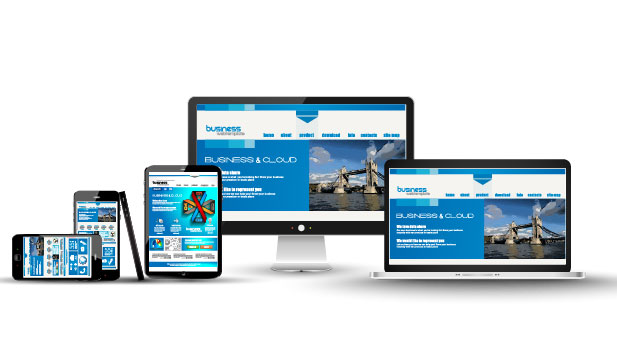Over the course of the past year, the global market situation has changed drastically. Global lockdowns, social distancing measures, and travel restrictions, as a result of the global COVID-19 pandemic, have forced an increasing number of formerly brick and mortar stores and small home businesses to look towards alternative business opportunities. With people looking towards the online world to satiate their shopping needs, especially in Oman, a shift towards eCommerce is a no-brainer. Fortunately, the shift is easier than you may initially think it is. Here are some quick tips to help you get the ball rolling.
Choose and Secure your Domain
The very first thing you need to do is secure your domain. This is by far one of the most critical components of taking your business online. The first step is to pick the extension. The most common of these, and also the one you would want to ideally get, is ‘.com’. However, Domain names are relatively cheap and thousands of new domain names are registered each day around the world. So, there is a chance you may not always find the domain name you want with your choice of extension. There are alternative extensions that you can try.
If your business is based locally in Oman, a ‘.om’ extension could work well. Outside of these two, there are others such as ‘.net’ and ‘.org’ or even some niche extensions like ‘. blog’, ‘. photography’ etc. Do keep in mind that some of latter ones are considered untrustworthy and can harm the overall traffic you receive.
Once you have decided on an extension for your shift to eCommerce, you will want to choose the domain name itself. Ideally you would want to get a domain that is identical to your business name. But this may not always be possible. If this is the case, there are a couple of simple tips you can follow to get one that works. The first thing to do is to keep it short and simple. At the same time, you need your domain name to be unique, catchy, and memorable, so you can stand out in your customers’ minds. Try and choose keywords that are related to your business and incorporate them into your domain. This can help your Search Engine Optimisation (SEO) results and raise your rank in online search results. Do keep in mind never to use hyphens, avoid using doubled letters, and avoid numbers. Each of these are prone to typos and can lead to lost traffic.
Once you have decided on a domain, registering it is relatively simple. All you need to do is get in touch with a service provider that offers domain registrations and pay them to register a domain of your choice for a specific amount of time. So long the domain is registered to you, no one else can claim it.
Design your Website
One your domain is registered, it’s time to work on your website. To setup an ecommerce website there are three key components you will need in addition to whatever a regular website requires. The first of these is a payment processing tool. Many domain registration service providers or webhosting services (more in this below) can offer such tools. A third-party service like PayPal can also work well. Using a well-recognised and secure payment tool will lend more credibility to your business.

The second thing you will need is a shopping cart tool. As with the payment tools, these can also be sourced from domain registration service providers or webhosting services or can even be designed yourself if required. Last, but most important, is an SSL Certificate (Secure Sockets Layer certificate). This is vital for any website that wishes to carry out online transactions. They are used to encrypt information your customers send when they purchase products or complete forms on your website. These are also the very first thing most online users look for before they make an online purchase.
Hand-in-hand with obtaining the above tools, you need to decide where your website will be hosted. The great part about this is that most domain registration services also provide web hosting service, as well as most of the aforementioned payment tools you would need to kick off your online business.
Once you have each of these tools in place, you can get down to actually designing your eCommerce website. If aren’t already well versed in web designing, you need not fret. There are several online easy-to-use DIY website builders you can get a hold of today. WordPress is a particularly good example that offers you a broad range of free or paid themes and plugins to really give your website a professional feel. Alternatively, if you don’t mind spending the extra cash, you can always hire professional designers to design your webpage for you.
Another core part of the website is the content itself. Good, professionally written content is crucial to growing your online business. The key to success is to add just the right amount of quality content on key pages of your website so that people can easily access all information they require. Focus on key pages first such as your Home page, About Us page, Contact Us page, and your Products pages. These are the first pages most visitors look at. Well written content, coupled with easily accessible quick links, high-quality visuals, and easy access to key information with regards to purchases, shipping, payments, and returns will go a long way in making you look and feel professional as well as build trust.

Another core aspect for eCommerce content is SEO. This is the process of refining the content on your website in such a way as to achieve higher search engine rankings. In order to achieve this, you need to make sure all content on your page is relevant to your target customer, and that you make proper use of keywords and phrases that are common to your area of business.
All the effort you placed in your website won’t be of much use if you can’t be found easily on most common search engines. This is where search engine optimisation comes in. Fondly known as SEO, this is the process of refining the content on your website in such a way as to achieve higher search engine rankings. The best part of good SEO is that you get higher placements on search engines such as google for free, without having to pay for sponsored listings. This also ensures organic visitors to your site are more common. Carefully planned out navigation with proper links and properly labelled high-quality images can also drastically help your SEO results.
The Business Back End
With your website ready to go live, there is one other aspect of your business you need to look into – the back end. The first of these is properly deciding what products you are wishing to sell online. While service-based firms need not worry about this as much, more common brick and mortars stores need to look for storage and shipping solutions if they don’t already have this in place. eCommerce business relies more on direct shipping, hence it may be beneficial to trim down your inventories to keep costs low. Calculate the costs and see what is viable and remove items off your list accordingly. If these do pose a problem for you, drop shipping can a decent alternative. This is a common practice that sees the retailer transfer its customer’s orders and shipment details to either the manufacturer or a wholesaler, who then ship the goods directly to the customer from their factory or warehouse.
Another great solution worth looking into is Enterprise Resource Planning software. This useful piece of kit brings together all facets of your operation – from marketing and logistics, to customer service, and integrates it all into one singular piece of software in order to make it far more seamless and efficient. There are several service providers that offer such a service and they can be quite affordable. So, should your online business grow to a large enough size, we would definitely recommend looking into this solution.
With each of these aspects in place, you will be all ready to take your business online as well as maximise its chances for success. So, why wait? Get your brand out there and make your mark on the online eCommerce world today; the earlier you start the better your chances for success.




